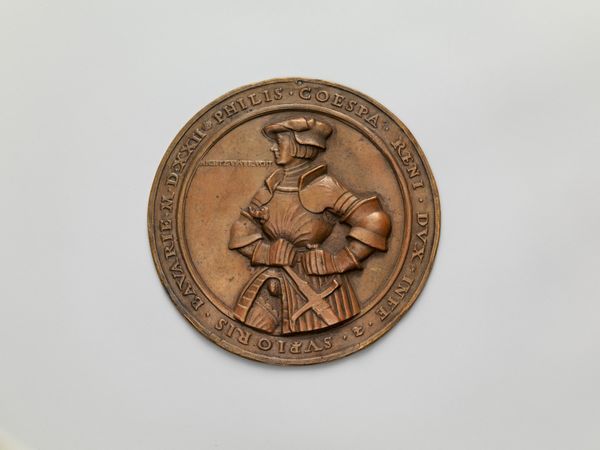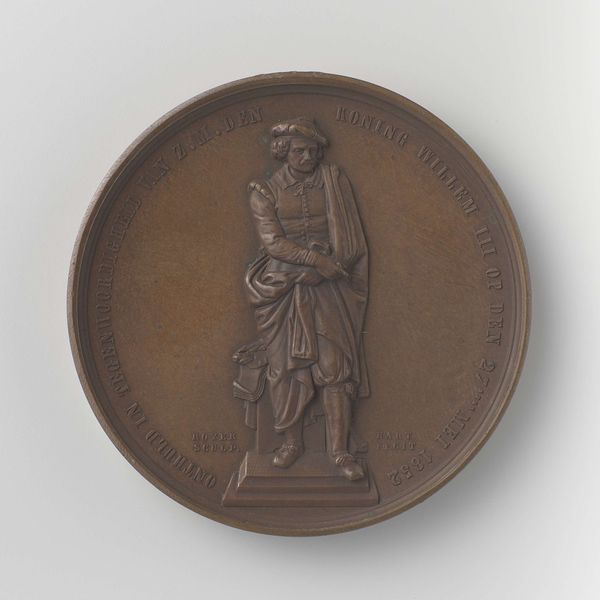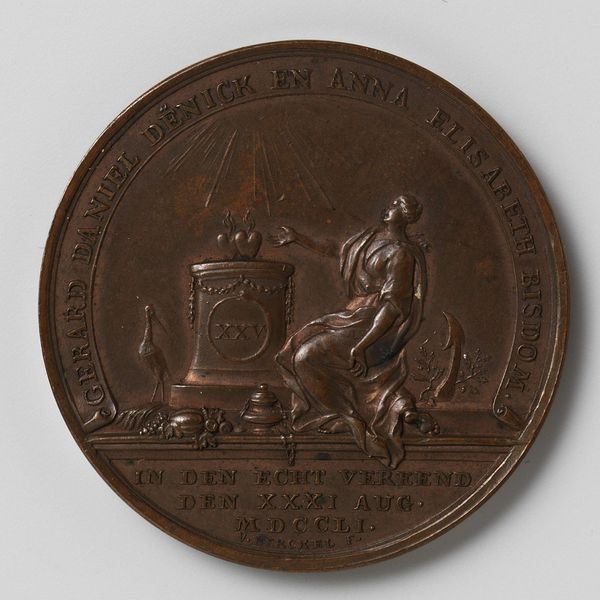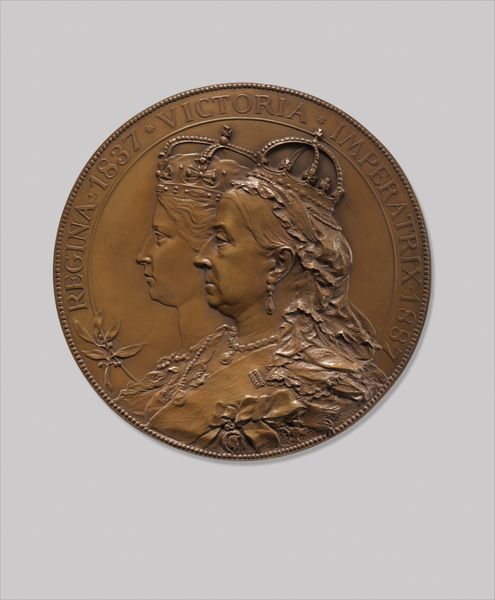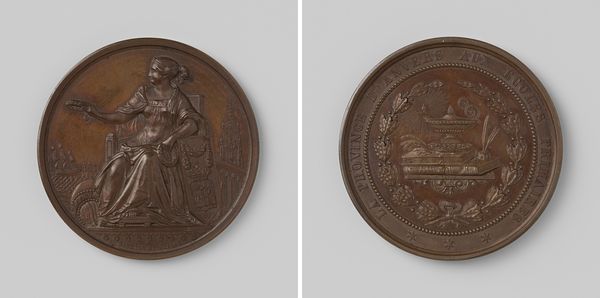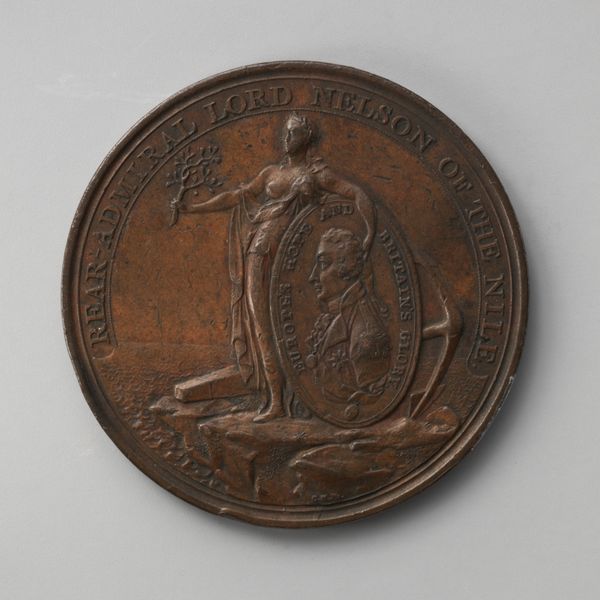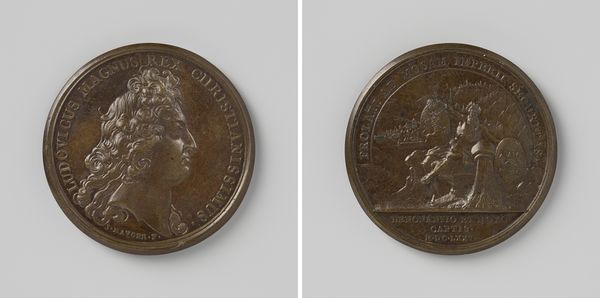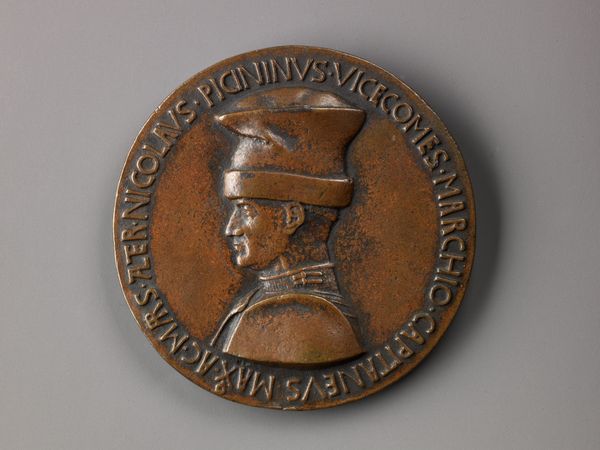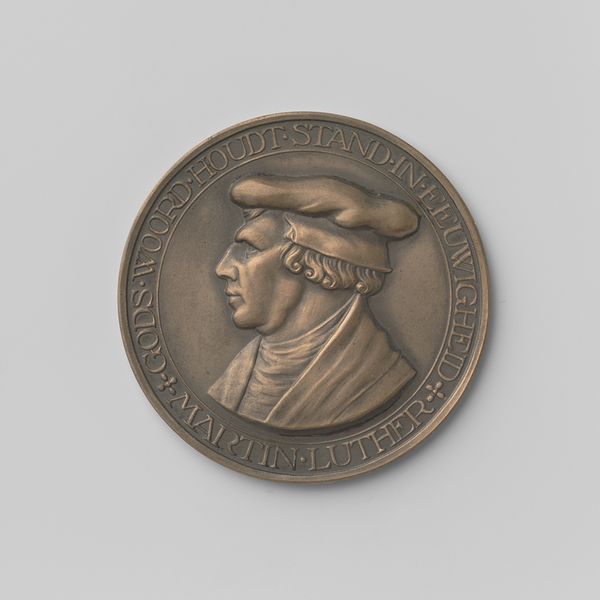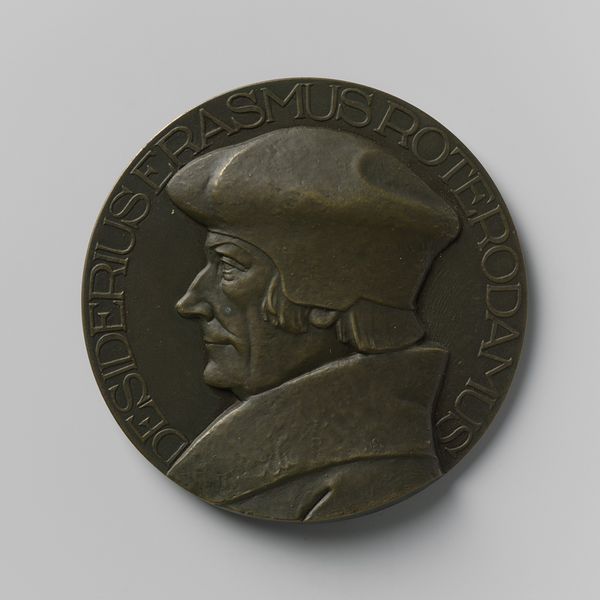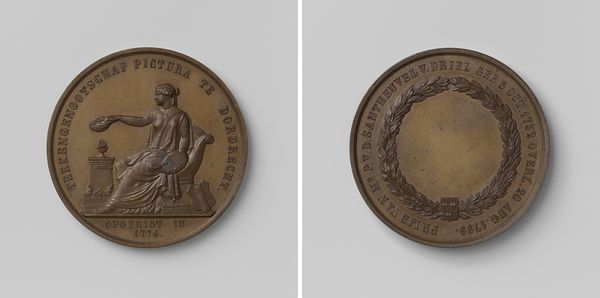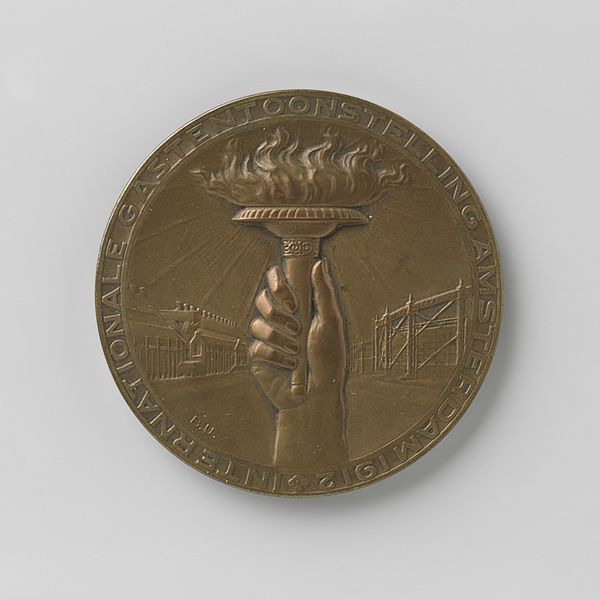
metal, relief, bronze, sculpture
#
portrait
#
medieval
#
metal
#
relief
#
bronze
#
sculpture
#
italian-renaissance
Dimensions: height 12.5 cm, width 12.9 cm
Copyright: Rijks Museum: Open Domain
Curator: Here we have a striking bronze relief, a portrait medal of Ursula Ligsalz, crafted by Friedrich Hagenauer in 1527. It’s a piece that really captures a moment, doesn't it? What strikes you first? Editor: The sheer gravity of it! There's an austerity that speaks volumes about gendered expectations. Here's a woman, rendered in bronze, framed not by softness, but by the hard, unforgiving edges of societal roles and familial expectations. Curator: You feel that rigidity even in the material, the cold bronze? I see poise. A stillness that holds a deep intelligence. Her gaze, though averted, is incredibly knowing. She seems self-contained and wise. I am fascinated by her braid trailing around her neck. Editor: Poise yes, but controlled. This isn't a celebration of her inner life as much as it's an assertion of status, the Ligsalz name etched around her, a circular constraint defining who she can be. What does it tell you about a world where a woman's worth is inscribed into a metal disc? How much of herself is actually absent? I wonder if her agency had limits, shaped by historical norms concerning womanhood. Curator: Well, in some ways, aren't we all, regardless of gender, defined by our social context, at least partially? This could be equally about permanence and legacy, an attempt to carve out space within it. She is more than her representation, wouldn't you agree? I think Friedrich saw in her something to immortalize, in addition to her rank in society. It goes both ways. Her clothing suggests she would’ve appreciated sophisticated clothes, design and expression, or what do you make of it? Editor: I see status. The intricate lacework on her bodice and that angular headpiece reassert a woman’s assigned place, one that equates value with visible affluence, marital standing, reproductive viability. Those were things Renaissance artists and their audiences saw, first, before recognizing any independent character in their female subjects. What space was left for Ursula? Curator: Perhaps she found ways to subvert them, even within those constraints? Perhaps her self-containedness WAS her rebellion? And maybe that is precisely why Friedrich, ever the genius, captured that stillness, for that's where Ursula held her strength and unique approach in the world, as a female matriarch with strong ties and heritage in that world. Maybe that explains her self possession. The world may try to fix you to your description but that is merely a sign of them wanting something YOU have. I rather admire that quiet statement of resolve. Editor: A complex claim, that self-possession equals resistance. Still, a great way to engage with a compelling figure who once lived. Thank you for the reminder.
Comments
rijksmuseum about 2 years ago
⋮
While small portraits in wood were often made as casting models for bronze medals, they also functioned as autonomous, desirable bibelots. The largest of these three examples portrays Ursula Ligsalz-Senffl, the second wife of a Munich burgomaster, Sebastian Ligsalz. The couple wed in 1522.
Join the conversation
Join millions of artists and users on Artera today and experience the ultimate creative platform.
